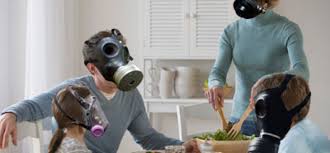Just a cool glass of water is all we need to quench our thirst, especially during a hot summer day. It is very important that only clean and refreshing water is what  we put into our body—- no color or strong smell. Giving a little more consideration on the source of the water that we drink is essential since water is inevitable part of our everyday lives. The most common sources of water that runs through the residential areas and offices are:
we put into our body—- no color or strong smell. Giving a little more consideration on the source of the water that we drink is essential since water is inevitable part of our everyday lives. The most common sources of water that runs through the residential areas and offices are:
- Streams
- Ponds
- Rivers
- Other natural resources

Have you ever wondered how it was processed, cleaned, treated and tested before it gets into our glass? Do you ever wonder what chemicals and pollutants might be present in your glass of tap water? How can you protect your family from the danger of diseases and other risks that you might get from a polluted and contaminated water?
Despite the protection and regulations imposed by the Environmental Protection Program, by setting acceptable limits for pollutants in our water and/or water system, there are still processes and sources that contribute to water pollution. These processes can affect the quality of the tap water that runs through the faucets, and even worse, may cause diseases and other health problems.
There are different contaminants that might be present in tap water from which health problems can become a major issue. These water contaminants can be:
- Microbiological
- These contaminants can be a source of infectious diseases caused by E.coli and other parasites.
- It can be particular danger to children, older people, pregnant women and people whose immune system are compromised.
- A change in the colour, taste or smell of water can indicate a problem. However, such changes are not always present, even if the water is contaminated.
- Some microbiological contaminants:
- Cryptosporidium
- Giardia lamblia
- Legionella
- Chemical
- Heavy metal Lead (Pb) can be present in drinking water (lead piping, lead solder, and lead-lined) stored in the water tanks and as it flowas along the pipelines.
- Water for drinking should contain as little lead as possible
- Other chemical contaminants:
- Bromate
- Chlorite
- Haloacetic acids
- Antimony
- Arsenic
- Asbestos
- Beryllium
- Cyanide
- Mercury
 Ensure Water Safety Anywhere You Go
Ensure Water Safety Anywhere You Go
Wherever we go, and whatever we do, it is very important that we stay hydrated. Also, it is important that whether we are inside the house or even outdoors, there is a clean water to drink. Purity must be a priority.
The ARIIX Puritii bottles are available in a sweat-less stainless steel or durable, flexible plastic. When used together, the Puritii Bottle and Puritii filter combine the power of science with the purity of nature to ensure a safe supply of drinking water anywhere in the world.
Puritii Plastic Bottle is BPA-free and uses only olefin-based plastics, and mechanical grade silicone for water contact parts. All of these materials are also free of known estrogen-mimicking compounds. The Puritii Stainless Steel Bottle is made of LDPE (low density polyethylene), the cap is PP (polyprolyene), the valve is silicone, and the filter is made of ABS (used in piping system).
Puritii Water Filtration System is a patent-pending technological breakthrough in filtration design and is superior in the following:
- Bacterial Removal
- Virus Removal
- Protozoa Removal
- Parasites Removal
- Chemical Reduction




